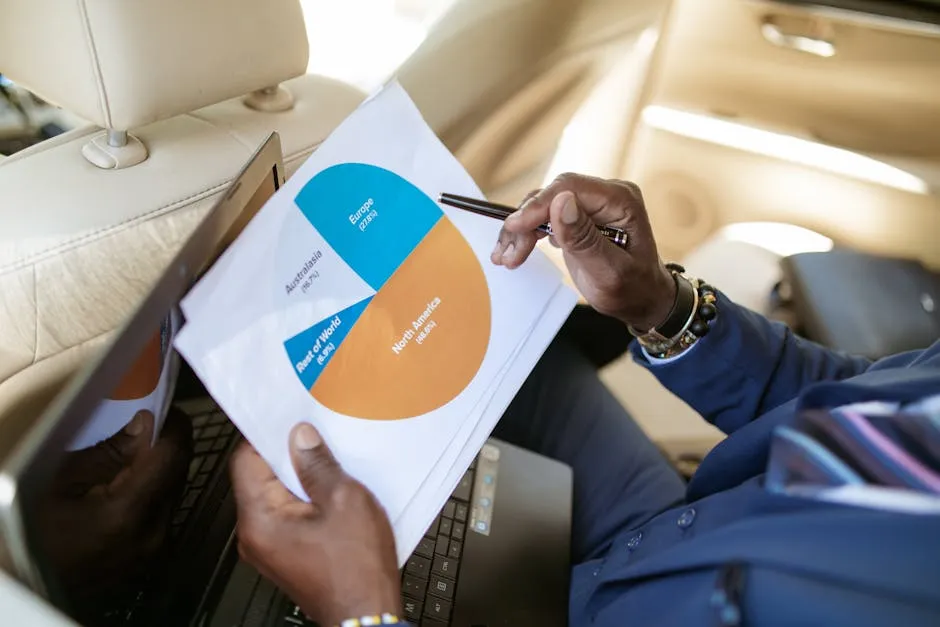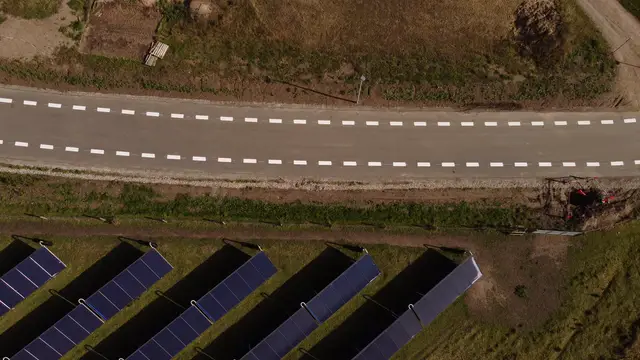Introduction
Auto repossession, the process where lenders reclaim vehicles due to missed payments, is gaining significant relevance in 2023. With the economy shifting, repossession statistics reveal a stark reality for many Americans. It’s like watching a game of musical chairs, but instead of chairs, it’s cars—and guess what? Many people are left standing.
This year, repossession rates have surged dramatically. A 23% increase in repossessions was reported in the first half of 2023 compared to the same period last year. What’s fueling this trend? Economic factors such as inflation and rising interest rates have taken a toll on household budgets. The average American is feeling the pinch, and the consequences are evident in their ability to keep up with car payments.
Inflation, which has led to increased costs of living, is a primary culprit. The price of goods and services is soaring, and many families find themselves choosing between essentials like food and rent, or making that monthly car payment. Speaking of which, if your car has been a bit unreliable lately, consider investing in an Auto Repair Tool Kit. You never know when a simple fix can save your day!
This article aims to provide a detailed analysis of auto repossession statistics for 2023. We will explore the causes of this alarming trend, its effects on individuals and families, and predictions for the future. By understanding these statistics, readers can better navigate their financial decisions and avoid the pitfalls of auto repossession.

To understand the impact of these trends, it’s essential to look at the future trends in repossession rates and their implications.
The Current State of Auto Repossessions
Overview of Repo Statistics
The landscape of auto repossessions in 2023 paints a concerning picture. A staggering 1.6 million vehicles are projected to be repossessed by the end of the year. This marks a significant rise from approximately 1.2 million in 2022. The statistics reveal a 23% increase in repossessions during the first half of 2023 alone, indicating a trend that is unlikely to reverse anytime soon.
Data from sources like Cox Automotive sheds light on these troubling figures. The surge in repossessions reflects broader economic challenges faced by American households. As car prices continue to climb, so do the monthly payments. In fact, the average new car payment has reached around $762, up from previous years. What’s even more alarming is that 17% of car owners now report paying over $1,000 monthly.
Speaking of keeping your car in shape, a Car Vacuum Cleaner can make a world of difference in maintaining that new car smell. Plus, who doesn’t want to impress their passengers with a clean ride?
Let’s take a look at the yearly repossession numbers from 2010 to 2023:
| Year | Repossessions |
|---|---|
| 2010 | 1,336,600 |
| 2011 | 1,059,940 |
| 2012 | 986,013 |
| 2013 | 1,063,646 |
| 2014 | 1,180,053 |
| 2015 | 1,235,186 |
| 2016 | 1,492,428 |
| 2017 | 1,623,727 |
| 2018 | 1,610,951 |
| 2019 | 1,683,220 |
| 2020 | 1,288,199 |
| 2021 | 1,110,925 |
| 2022 | 1,228,372 |
| 2023 | Projected: 1,600,000 |
The table illustrates the fluctuations in repossession rates over the years, with significant dips during the pandemic when stimulus payments helped many borrowers stay afloat. However, as government assistance waned, the realities of unpaid loans began to surface again.
Further projections indicate that if economic conditions do not improve, the upward trend in repossessions could continue into 2024 and beyond. The situation is ripe for analysis, and understanding the causes behind these statistics is crucial for anyone navigating the complexities of auto financing.
This year’s statistics are not just numbers; they represent real people facing difficult choices. As we delve further into the economic factors driving these repossessions, it’s clear that awareness and proactive financial management are more important than ever.

Economic Factors Contributing to Repossession Rates
The economic landscape in 2023 has presented numerous challenges for auto borrowers. Inflation, rising vehicle prices, and high-interest rates are at the forefront of this financial distress. Imagine trying to juggle a dozen flaming torches while riding a unicycle—this is how many borrowers feel trying to keep up with their auto payments amidst soaring costs.
Let’s start with inflation. It’s not just a buzzword; it’s a reality that has seeped into every aspect of our daily lives. The cost of groceries, housing, and gas has skyrocketed. In such an environment, the average American family faces tough choices. According to recent data, the average new car payment reached an eye-watering $762, with 17% of car owners shelling out over $1,000 monthly. That’s a hefty sum for most households, especially when rent and food prices are also on the rise.
Now, let’s not forget about vehicle prices. In December 2022, the average price for a new vehicle reached $49,939, reflecting a staggering 32% increase from January 2020. This jump in cost means higher monthly payments, pushing many borrowers to the brink. When your car payment starts to resemble a mortgage, you know you’ve got a problem.
High-interest rates have further compounded these issues. The Federal Reserve has been raising interest rates to combat inflation, which makes financing a vehicle more expensive. As of October 2023, the average interest rate for new car loans hovered around 7.4%. These climbing rates mean that even those who could afford a car a year ago may find themselves struggling today.
If you want to avoid being in a tough financial spot, consider investing in a Car Emergency Kit. Because when life throws you a curveball on the road, you’d rather be prepared than stuck in the middle of a crisis!
The Federal Reserve’s policies have created a precarious environment for borrowers. Many are finding themselves in a position where they must choose between paying for essentials and maintaining their vehicle payments. It’s like being stuck in a financial game of “rock, paper, scissors,” where every choice feels like a gamble.
In this economic climate, it’s clear that the factors leading to increased repossession rates are intertwined. As inflation continues to rise, vehicle prices remain high, and interest rates soar, borrowers are increasingly at risk. The numbers don’t lie: the surge in repossessions reflects the mounting financial strain on American families. Understanding these economic factors is crucial for anyone navigating the choking grip of auto financing.
As we dive deeper into the repercussions of repossession, it’s essential to recognize how these economic pressures impact borrowers beyond just their monthly payments. The ramifications of losing a vehicle extend well into the future, affecting credit scores and overall financial stability.

Emotional and Social Effects
Auto repossession isn’t just about losing a car. It’s a heart-wrenching experience that sends ripples through families and individuals alike. When a vehicle is taken away, it often translates to stress and anxiety. Financial insecurity looms large, casting shadows on already strained relationships and daily routines.
Consider Sarah, a single mother of two. After losing her job, she struggled to keep up with car payments. When the repo truck showed up, it felt like the ground had vanished beneath her feet. Without a car, her job search became ten times harder. Grocery trips turned into logistical nightmares, and she found herself relying on friends for rides. The emotional toll was immense, leading to sleepless nights filled with worry about her family’s future.
The implications of repossession stretch beyond individual families. The broader social fabric is affected too. Losing a vehicle can mean losing employment opportunities. How can someone attend interviews or get to work without reliable transportation? Many individuals find themselves trapped in a vicious cycle. They need a car to get to work, but without work, they can’t afford to keep their car.
Statistics paint a grim picture. With over 1.6 million vehicles projected to be repossessed in 2023, countless stories like Sarah’s unfold across the nation. These aren’t just numbers; they represent real lives impacted by financial distress. Furthermore, repossession can lead to a stigma. Society often views those who’ve lost their vehicles through a lens of judgment. This stigma compounds the emotional burden, making it difficult for affected individuals to seek help or support.
Moreover, the stress induced by financial insecurity can lead to mental health issues. Anxiety and depression can become constant companions for those facing the loss of their vehicle. The weight of unpaid bills, the fear of losing more, and the uncertainty of the future create an overwhelming emotional landscape that many struggle to navigate.
In short, auto repossession has far-reaching effects that extend well beyond the financial realm. The emotional and social fallout paints a stark picture of the human cost behind the statistics. It’s essential to acknowledge these realities, as they remind us that behind every repossession statistic is a story of hardship and resilience. Understanding this human element fosters compassion and encourages proactive conversations about financial literacy and support services.

The Repossession Process Explained
How Repossession Works
The repossession process can feel like a whirlwind, leaving borrowers disoriented and stressed. It typically begins when a borrower defaults on their auto loan, which means they’ve missed a payment or two. Once this happens, the lender can initiate repossession. But wait—there’s more to it.
In many states, the law allows lenders to reclaim vehicles as soon as a borrower defaults. This means the fun of a “right-to-cure” grace period is often non-existent. If a payment is missed, the lender can send a repossession agent to retrieve the vehicle, often without prior notice. This can happen as soon as 60 or 90 days after the missed payment, depending on the lender’s policies.
So, what happens next? Once the vehicle is repossessed, lenders may choose to sell it at auction or through other means to recover their losses. Borrowers might still be liable for any remaining loan balance after the sale. This is where things get tricky—imagine losing your car and still being stuck with debt. It’s a double whammy that can leave individuals reeling.
Knowing your rights is crucial during this process. Borrowers should familiarize themselves with their state laws regarding repossession. For example, some states require lenders to notify borrowers and allow them a chance to catch up on payments before moving forward with repossession. It’s essential to stay informed and communicate openly with lenders if you’re facing financial difficulties.
The repossession process is a complex and often stressful journey. Understanding how it works can empower borrowers to navigate this challenging situation more effectively. It’s not just about reclaiming a vehicle; it’s about maintaining communication and seeking solutions before the situation escalates. After all, knowledge is power, especially in uncertain times.

Alternative Solutions for Borrowers
Facing repossession can feel like being caught in a storm without an umbrella. Yet, for borrowers at risk, there are several lifelines available. Loan modifications are a popular option. This allows borrowers to adjust their loan terms, making payments more manageable. Lenders may agree to lower interest rates or extend the loan term, which can provide much-needed breathing room.
Another smart move is to request a deferment. This option lets borrowers pause payments temporarily. Though interest may accrue during this time, it can help borrowers avoid immediate repossession. Many lenders appreciate proactive communication, so reaching out to discuss options is crucial.
Moreover, financial literacy plays a pivotal role in preventing repossession. Understanding your financial situation empowers you to make informed decisions. It’s about knowing when to ask for help and recognizing potential pitfalls before they become crises. If you want to boost your financial literacy, consider picking up a Financial Literacy Book. Knowledge is power, my friends!
Staying informed about your rights and obligations can make a world of difference. Lenders often prefer to work with borrowers rather than losing their collateral. A simple phone call can open doors to alternative solutions. Remember, proactive communication is key to navigating these choppy waters. Don’t wait for the storm to hit—act early and explore your options to steer clear of repossession.

Future Trends and Predictions
Market Predictions for Auto Repossession Rates
As we look towards the future, the auto repossession landscape remains turbulent. Current economic indicators suggest that repossession rates may climb even higher. In 2024, projections estimate around 1.6 million vehicles could be repossessed. This marks a notable increase from 1.2 million in 2022 and 1.5 million in 2023.
What’s driving this uptick? Economic pressures, including inflation and rising vehicle prices, are key culprits. The average monthly payment for new vehicles has soared to $762, leaving many borrowers struggling. Additionally, the average interest rate for new car loans is hovering around 7.4%, making financing a vehicle more daunting than ever.
Experts predict that if these economic trends continue, repossession rates could reach alarming heights in 2025, potentially exceeding 1.7 million. The combination of high loan payments and stagnant wages creates a recipe for financial disaster. For many, the choice between paying for a car and covering other essential expenses is a tough one.
The economic climate has set the stage for increased repossession rates. With rising costs and financial instability, more borrowers may find themselves on the brink of losing their vehicles. Understanding these trends is crucial for borrowers to navigate their financial futures effectively. Awareness is power, and being informed about market predictions can help individuals make proactive decisions to safeguard their assets.

Innovations and Changes in the Industry
The repossession industry is evolving faster than you can say “repo man.” Technology is paving the way for revolutionary changes, with innovations like self-repossessing vehicles making headlines. Imagine a car that drives itself back to the dealership when payments are missed! Ford has even patented a system to make this a reality. While this may sound like something out of a sci-fi movie, it could soon be a practical solution for lenders aiming to streamline the repossession process.
But technology isn’t the only game-changer. Consumer behavior is shifting, too. With rising costs of living and economic uncertainty, many buyers are reassessing their financial capabilities. The trend of purchasing increasingly luxurious vehicles, often beyond one’s means, is creating a perfect storm for repossessions. Individuals are now more cautious, seeking affordable options rather than splurging on flashy models. This changing mindset could reshape auto financing and lending practices as more people prioritize sustainability over status.
Economic conditions also play a critical role in the future of auto financing. With inflation squeezing budgets and interest rates steadily climbing, borrowers face tough decisions. As monthly payments rise, many are forced to choose between paying for their car and covering essential expenses like rent and groceries. Lenders are on alert, adapting their offers to better match the changing landscape of consumer needs and financial realities.
If you’re looking to keep your car in peak condition and avoid costly repairs, it might be worth investing in Car Maintenance Guide Book. After all, an ounce of prevention is worth a pound of cure!
In short, the repossession industry is in a state of flux, driven by technological advancements and shifting consumer attitudes. As we look to the future, it’s clear that staying informed about these trends will be crucial for both borrowers and lenders alike.

Conclusion
Auto repossession statistics for 2023 provide a sobering glimpse into the financial struggles many American families face today. With projections indicating around 1.6 million vehicles will be repossessed, this trend highlights the impact of rising costs, economic instability, and changing consumer behaviors. The 23% increase in repossessions during the first half of the year is not just a number; it represents real lives affected by financial distress.
Understanding the reasons behind these statistics is essential. Inflation and high-interest rates have driven car payments to alarming heights. The average new car payment is now approximately $762, with many borrowers struggling to keep up. This financial strain can lead to a downward spiral, where missed payments result in repossession, negatively affecting credit scores for years to come.
Awareness of financial management is more critical than ever. Clear communication between borrowers and lenders can make all the difference. Borrowers should not hesitate to reach out to their lenders if they’re facing difficulties. Many lenders are willing to work out payment plans or offer temporary relief options. Ignoring the situation can lead to devastating consequences.
As we move into 2024 and beyond, it’s crucial for readers to stay informed about their financial obligations. The landscape of vehicle ownership is changing, and understanding these shifts can empower consumers to make wiser decisions. Whether it’s choosing a more affordable vehicle or understanding the implications of high-interest rates, knowledge is power.
In this evolving environment, proactive financial planning and open communication can help avoid the pitfalls of auto repossession. By staying engaged and informed, readers can navigate these turbulent waters, ensuring they maintain ownership of their vehicles and their financial well-being.

FAQs
What is auto repossession?
Auto repossession is the process where lenders reclaim vehicles from borrowers due to missed loan payments. This usually occurs after a borrower defaults on their loan agreement.
How many cars are repossessed each year?
In 2022, over 1.2 million cars were repossessed. Estimates for 2023 suggest that this number could rise to approximately 1.6 million, reflecting a significant increase in financial distress among consumers.
What can I do to avoid repossession?
To avoid repossession, maintain open communication with your lender. If you’re struggling to make payments, reach out to discuss options like loan modifications or deferments. Being proactive can often prevent the situation from escalating.
How does repossession affect my credit score?
Repossession can have a significant negative impact on your credit score. It typically stays on your credit report for seven years, making it harder to obtain loans in the future. The stigma of repossession can also affect your financial reputation.
What should I do if my car is repossessed?
If your car is repossessed, first retrieve any personal belongings from the vehicle. Next, contact your lender to understand your rights and obligations, including any remaining loan balances. It’s vital to stay informed about your options moving forward, whether it be negotiating payment terms or exploring alternatives.
Please let us know what you think about our content by leaving a comment down below!
Thank you for reading till here 🙂
All images from Pexels




